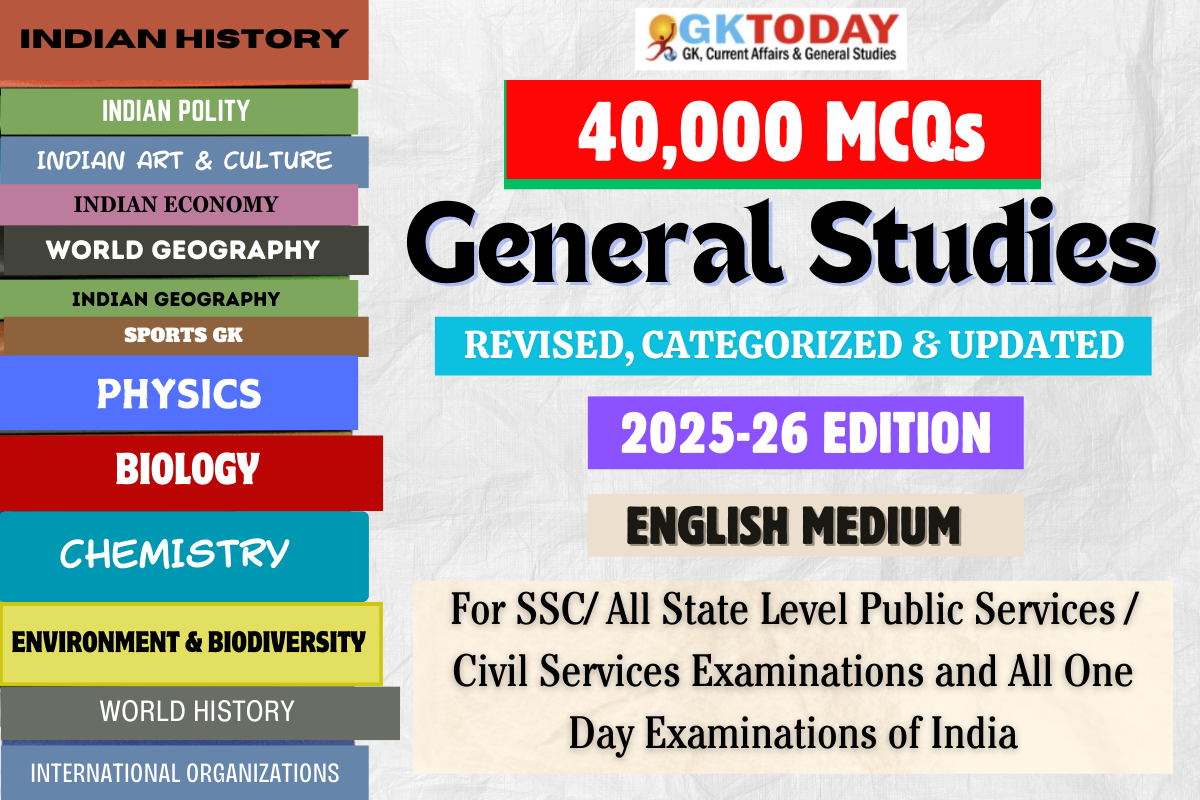Indian Polity & Constitution MCQs
Indian Polity & Constitution Objective / Multiple Choice (MCQs) Questions for Preparation of SSC-CGL, UPSC Civil Services, NDA, CDS, Railways and State Level Public Services Examinations.
11. Constituent Assembly of India was formulated on the recommendation of which of the following?
[A] Wavel Plan
[B] Cripps Mission
[C] August Offer
[D] Cabinet Mission
Show Answer
Correct Answer: D [Cabinet Mission]
Notes:
The constituent assembly was formed on the recommendation of the Cabinet Mission which visited India in 1946. The Constituent Assembly met for the first time in New Delhi on 9 December, 1946 in the Constitution Hall which is now known as the Central Hall of Parliament House.
12. Which of the following words is not written in the preamble of the Indian Constitution?
[A] Sovereign
[B] Socialist
[C] Democratic
[D] Indians
Show Answer
Correct Answer: D [Indians]
Notes:
The Preamble proclaims the solemn resolution of the people of India to constitute India into a ‘Sovereign socialist secular democratic republic’. The Preamble was adopted with the constitution in the constituent assembly.
13. Who among the following is not a member of any of the two houses of our country?
[A] President
[B] Prime Minister
[C] Finance Minister
[D] Railway Minister
Show Answer
Correct Answer: A [President]
Notes:
President is not a member of any of the two houses of our country. President is a title given to leaders of republican states. President of India is the ceremonial head of state of India and the commander-in-chief of the Indian Armed Forces.
14. In which part of the constitution of India the concept of welfare state is included?
[A] Preamble
[B] Fundamental Rights
[C] Fourth Schedule
[D] Directive Principles of State Policy
Show Answer
Correct Answer: D [Directive Principles of State Policy]
Notes:
India is described as a welfare state. It is a concept of government in which the state plays a key role in the protection and promotion of economic and social well-being of its citizens. This concept is included in the Directive principles of state policy.
15. Which act gave recognition to the ‘portfolio system’ introduced by Lord Canning in 1859?
[A] Indian Councils Act, 1861
[B] Indian Councils Act, 1892
[C] Government of India Act, 1858
[D] None of the Above
Show Answer
Correct Answer: A [ Indian Councils Act, 1861 ]
Notes:
The Indian Councils Act, 1861 recognized the portfolio system introduced by Lord Canning. Under this system, a member of the Viceroy’s council was made in-charge of one or more departments of the government and was authorized to issue final orders on behalf of the council on matters of this department.
16. Which of the following was not the member of Fazl Ali Commission formed in December 1953?
[A] Vallabhbhai Patel
[B] Fazl Ali
[C] KM Panikar
[D] HN Kunzru
Show Answer
Correct Answer: A [ Vallabhbhai Patel ]
Notes:
The Fazl Ali Commission formed in December 1953 consisted of three members: Fazl Ali, KM Panikkar and HN Kunzru. It is also known as States Reorganization Commission.
17. Which of the following writs means ‘to have the body of’?
[A] Habeas Corpus
[B] Mandamus
[C] Prohibition
[D] Quo-Warranto
Show Answer
Correct Answer: A [Habeas Corpus]
Notes:
Habeas Corpus is a Latin term which in literal terms means ‘to have the body of’. It is an order issued by the court to a person who has detained another person and is asked to produce the body of the latter in the court. The court then investigates the cause and legality of detention.
18. Which article endeavors to separate the judiciary from the executive?
[A] Article 44
[B] Article 49
[C] Article 39
[D] Article 50
Show Answer
Correct Answer: D [Article 50]
Notes:
The Article 50 of the Constitution of Indian which is enshrined in the Directive Principles of State Policy aims to separate the judiciary from the executive in the public services of the State.
19. Which of the following Constitutional Amendment Act was called as ‘Mini Constitution’?
[A] 42nd
[B] 46th
[C] 69th
[D] 91st
Show Answer
Correct Answer: A [42nd ]
Notes:
42nd Constitutional Amendment Act of 1976 altered and added several provisions of the Constitution. It was introduced to overcome the difficulties arising from the decision of the Supreme Court in Keshvananda Bharti Case of 1973.
20. Which of the following are included in the basic structure of the constitution of India?
1. Supremacy of the Constitution
2. Judicial Review
3. Principle of equality
4. Free and fair elections
Select the correct option from the codes given below:
[A] Only 1 & 2
[B] Only 1 & 3
[C] Only 1, 2 & 3
[D] All of the above
Show Answer
Correct Answer: D [All of the above]
Notes:
The Supreme Court is yet to define what constitutes the ‘basic structure’ of the Constitution. From the various judgments, the following features mentioned above have emerged as ‘basic features’ of the Constitution of India.

